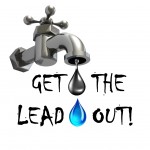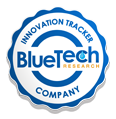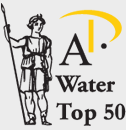Successful Water Applications
Sequester Metals in Industrial Water Treatment:
Sequester contaminating metals from process or waste streams to enable water reuse, discharge, or further treatment. Tusaar’s technology simply and efficiently works in the presence of competing metals and organics. It’s also highly effective on numerous organo-metallic complexes. Metals can be easily recovered and the media regenerated for reuse creating greater value and less waste.
Complex Laboratory Waste
 A pilot demonstration at a large public university’s laboratory-waste-management facility proved Tusaar’s ability to withstand and work in difficult environments. Waste is received at this facility from over 400 sources, with minimal description of constituents. Due to the variation in chemistry and the presence of multiple chemicals, organic, inorganic, and complexes, the university regularly shipped the waste as a hazardous material to an off-site vendor for treatment and safe disposal.
A pilot demonstration at a large public university’s laboratory-waste-management facility proved Tusaar’s ability to withstand and work in difficult environments. Waste is received at this facility from over 400 sources, with minimal description of constituents. Due to the variation in chemistry and the presence of multiple chemicals, organic, inorganic, and complexes, the university regularly shipped the waste as a hazardous material to an off-site vendor for treatment and safe disposal.
When a Tusaar system was installed, the only pre-treatment requirement was the adjustment of the influent pH to be between 2 and 5. This brought the solution into Tusaar media’s working range and also caused the precipitation of some metals that were in concentrations of over 1000 ppm. The media was contained in columns in series with the solution pumped through once.
The effluent metal concentrations were below the local city discharge limits while organics were reduced by over 75%. Tusaar’s process followed by a simple GAC column to further reduce organics and the neutralization of acids enabled the waste to be discharged into the public water treatment system.
The use of Tusaar media resulted in a reduction of waste volume of over 95% and a similar reduction in cost for the University. Following the success of this pilot, a permanent system utilizing the Tusaar technology has since been installed at the University of Colorado Boulder’s Environment, Health and Safety (EH&S) department.
Industrial Waste Pilot
A pilot was run as a printed circuit board manufacturer. The waste stream contained copper, nickel, silver, lead, tin, and zinc. The complex solution also contained multiple acids, organics, and chelating agents like EDTA. A 5-kg Tusaar media column was used as a demonstration model. An operation and regeneration sequence was run for 25 cycles. Results showed that the Tusaar technology performed better than the existing ion exchange system and required fewer pre- and post-treatment steps. Residence time required for Tusaar media was less than that needed for ion exchange.
Sequester metals from drinking water with modified carbon filters
Tusaar has developed a relatively simple, economical, and well-proven modification process for carbons. It leads to a transformational change in carbon’s ability to remove metals from drinking water.
Lead contamination can occur due to older plumbing. Copper, mercury, and uranium contamination could occur naturally or due to industrial activity.
Awards & Recognition

- Blue Tech Innovation Tracker Badge – BlueTech Research evaluates the global water market for companies with either innovative technologies or a strong go-to-market strategy.
 Artemis Project as Top 50 Water Company
Artemis Project as Top 50 Water Company- University of Colorado’s Environmental Health & Safety system run successfully meeting all customer, Tusaar, and regulatory requirements. Tusaar installs customer system to treat university laboratory waste. See Tusaar’s water treatment for project details.
- ImagineH2O Wastewater Prize Runner Up.

 A pilot demonstration at a large public university’s laboratory-waste-management facility proved Tusaar’s ability to withstand and work in difficult environments. Waste is received at this facility from over 400 sources, with minimal description of constituents. Due to the variation in chemistry and the presence of multiple chemicals, organic, inorganic, and complexes, the university regularly shipped the waste as a hazardous material to an off-site vendor for treatment and safe disposal.
A pilot demonstration at a large public university’s laboratory-waste-management facility proved Tusaar’s ability to withstand and work in difficult environments. Waste is received at this facility from over 400 sources, with minimal description of constituents. Due to the variation in chemistry and the presence of multiple chemicals, organic, inorganic, and complexes, the university regularly shipped the waste as a hazardous material to an off-site vendor for treatment and safe disposal.
 Artemis Project as Top 50 Water Company
Artemis Project as Top 50 Water Company